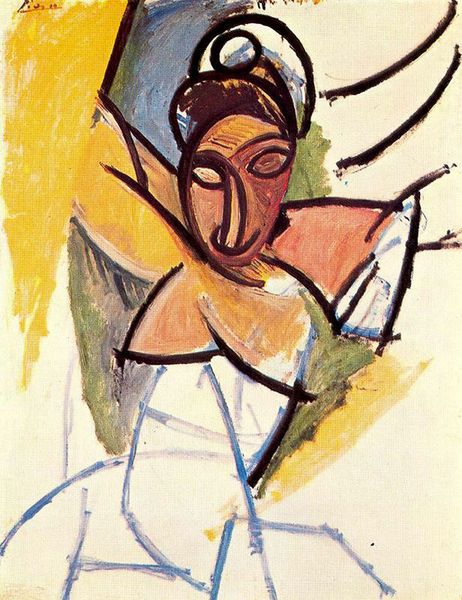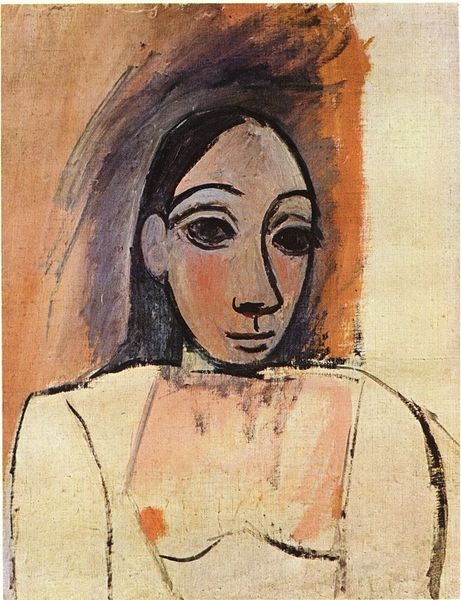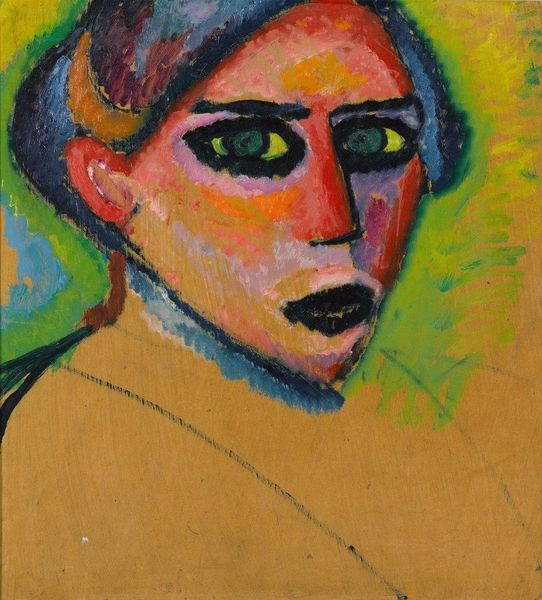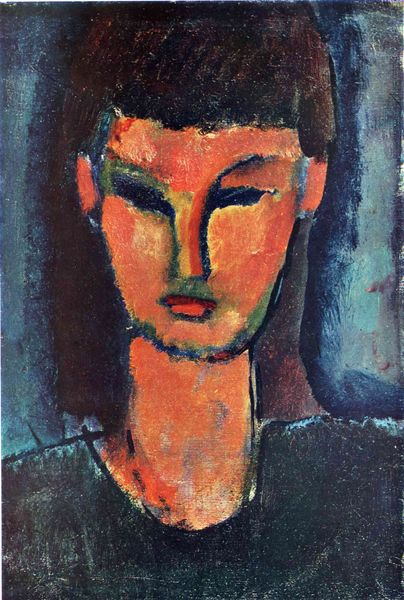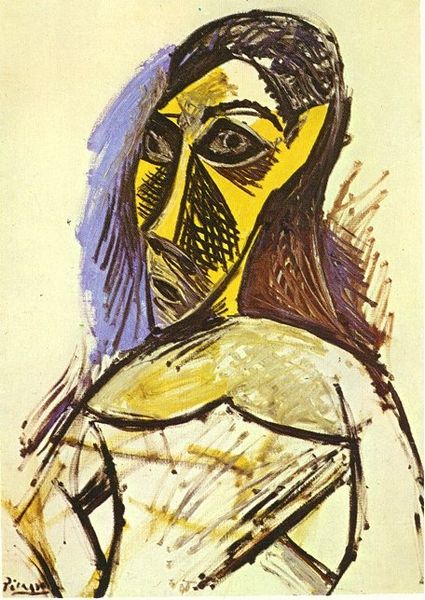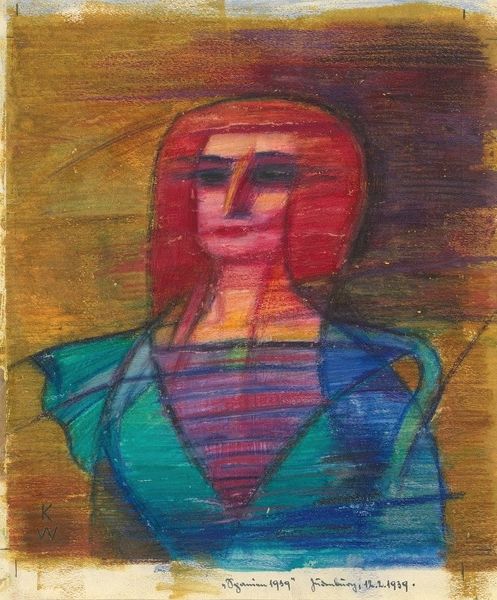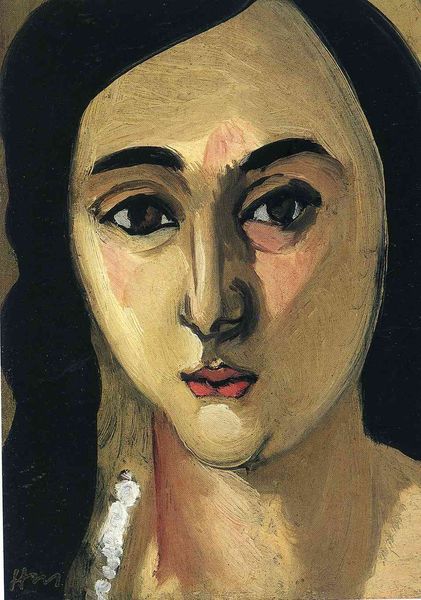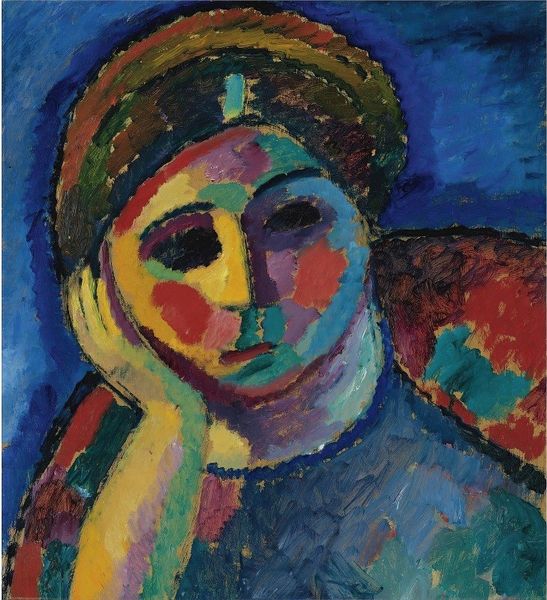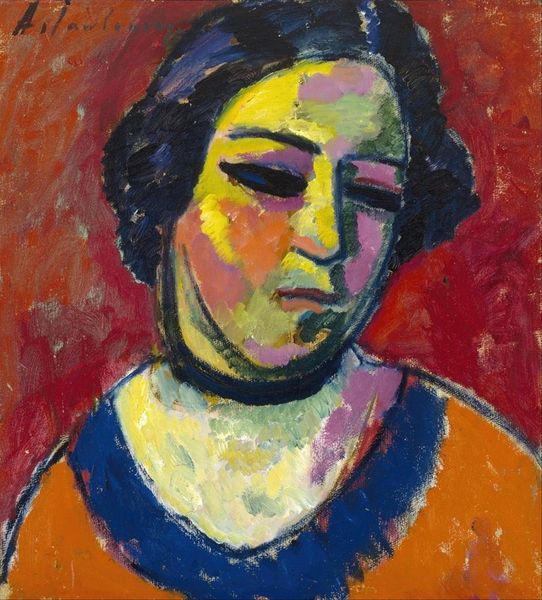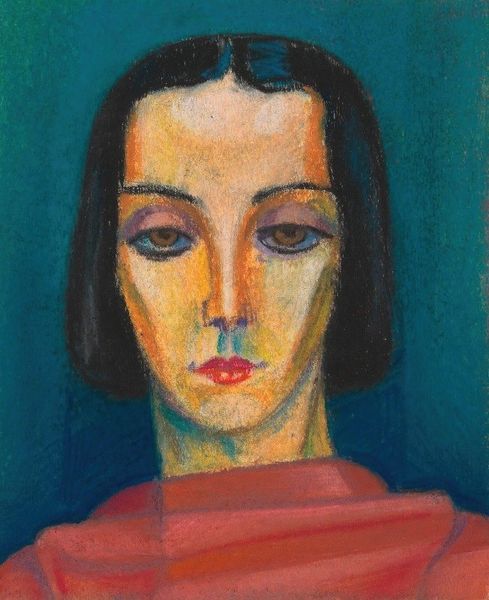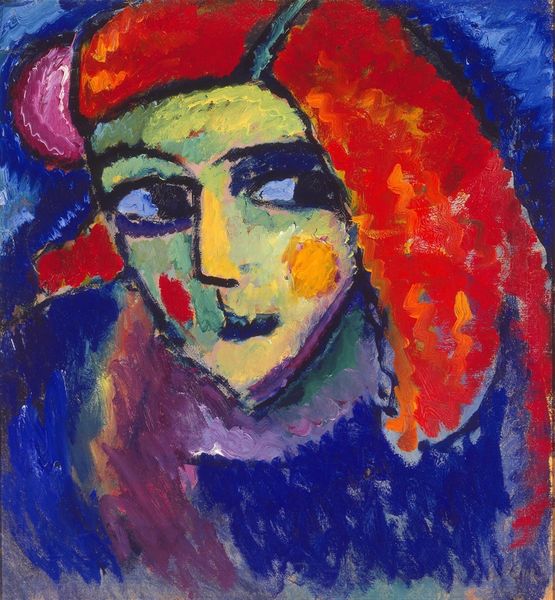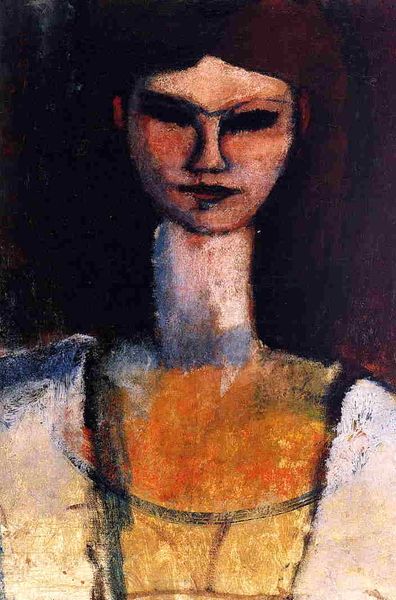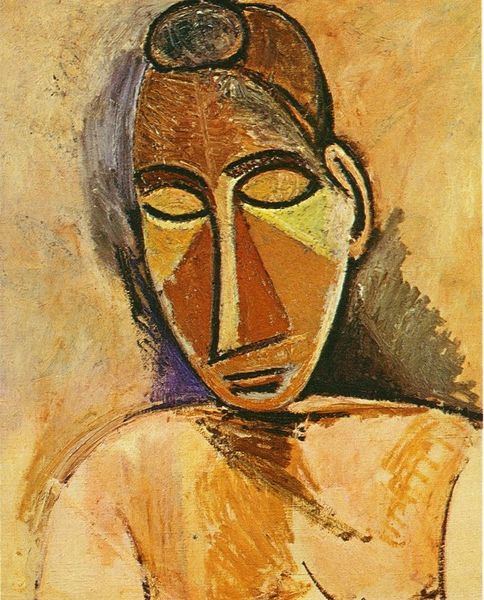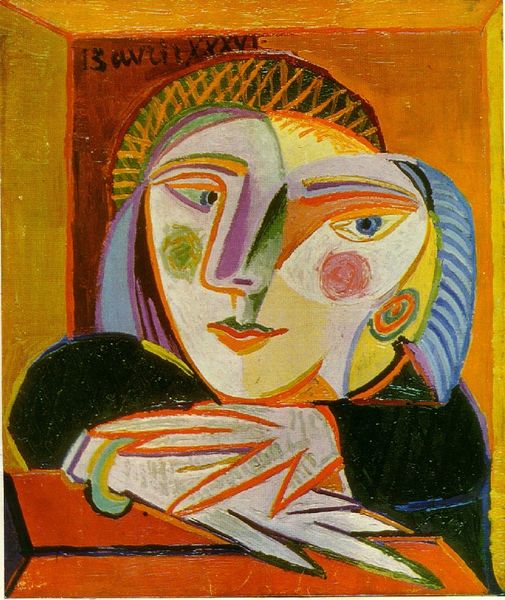
painting, oil-paint
#
portrait
#
cubism
#
painting
#
oil-paint
#
oil painting
#
expressionism
#
modernism
Dimensions: 65 x 58 cm
Copyright: Public domain US
Curator: Standing before us is Picasso's "Bust of Young Woman from Avignon," created in 1907. Painted in oil, it resides here in the Pompidou Center. What strikes you about this work at first glance? Editor: It's… unsettling. The fragmented features, the sharp angles—they create a sense of distortion, almost aggression. There's a tension in her gaze, too. She seems both vulnerable and defiant. Curator: Yes, those geometric forms signal the burgeoning of Cubism, yet there is so much more here. Picasso would return, perpetually, to faces – the mask as a vehicle for cultural memory. This piece sits on the precipice between representation and abstraction, much like other important transitional Picasso portraits, with primitive influence coming into sharper view. Editor: It's a stark departure from traditional portraiture. Where we usually find smooth lines and realistic proportions, we're confronted with planes and angles that seem to dismantle the face. How might this destruction serve Picasso's revolutionary representation of identity, do you think? Curator: Exactly! In dismantling it, Picasso reveals layers beneath the surface. Note the asymmetry – each side of her face rendered with a slightly different approach. He taps into the psychological idea that identity isn't singular, and that faces are not mirrors of true self, but masks of perception. The use of bold lines and fractured forms becomes a symbolic language. Editor: Absolutely. It reminds me of debates around ethnographic depictions. There is an underlying power dynamic that needs to be addressed to acknowledge who decides to unveil which elements to whom and how. How do we situate this figure within larger societal narratives of representation? Was he dismantling to deconstruct colonial power relations as an outsider of Western hegemony? Curator: I can't speak directly to Picasso's conscious intention; but, the primitivism evokes something more ancestral, universal in the way many modernists before him believed – seeking to tap into primal states of mind via distortion of form. Though it does create a valid space for an inquiry of those intentions nonetheless. Editor: Ultimately, whether intentional or not, Picasso opens a portal here – to question traditional frameworks around seeing, understanding, representing, or objectifying faces. Curator: Absolutely. This image asks you to not only witness the sitter’s physical presence but rather to delve into her potential existence outside her presentation. I now walk away seeing something new thanks to your lens! Editor: It's fascinating how Picasso's exploration, however conflicted, pushed us toward interrogating visual languages we assume to be universal. I appreciate the layers we discovered here today.
Comments
No comments
Be the first to comment and join the conversation on the ultimate creative platform.
